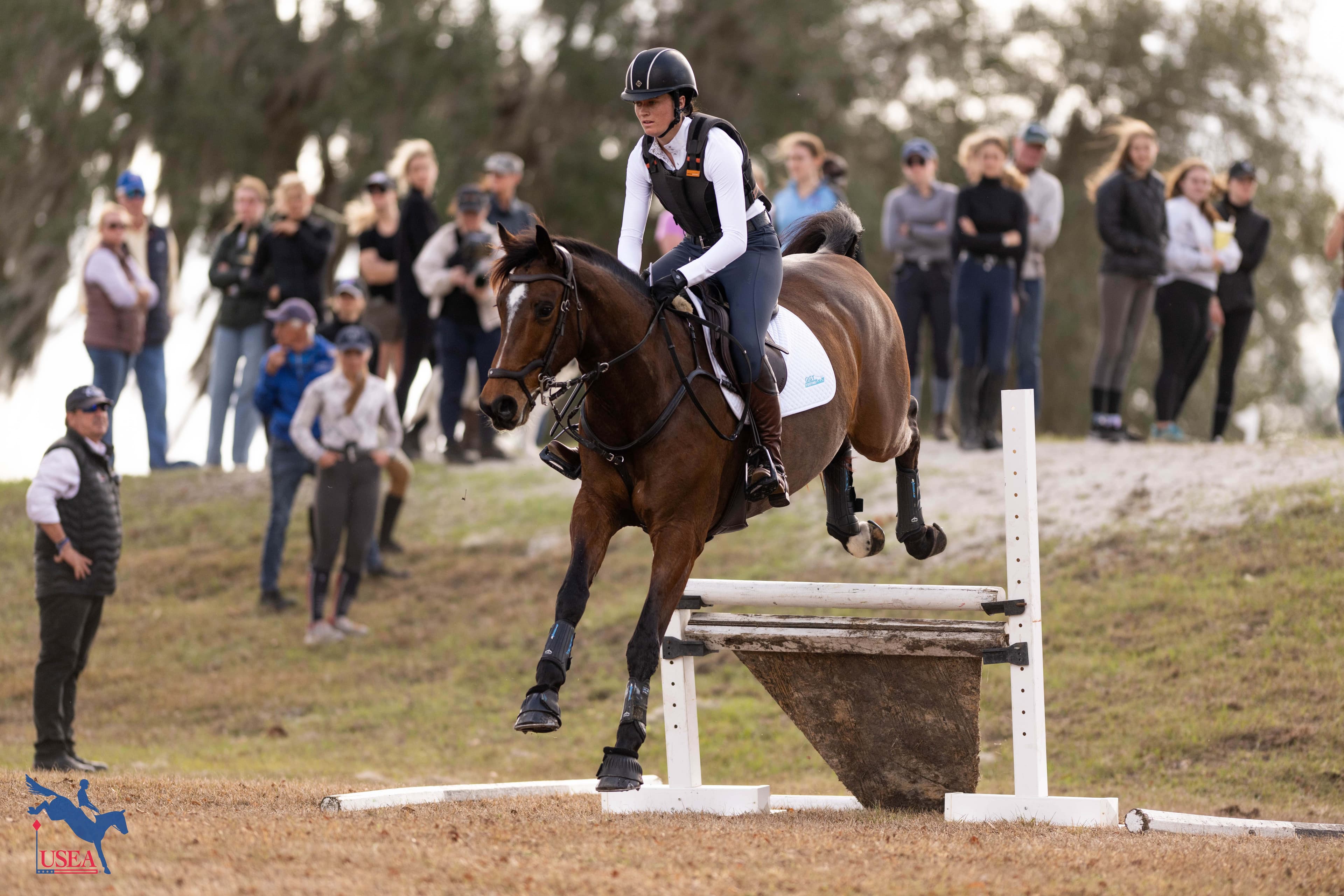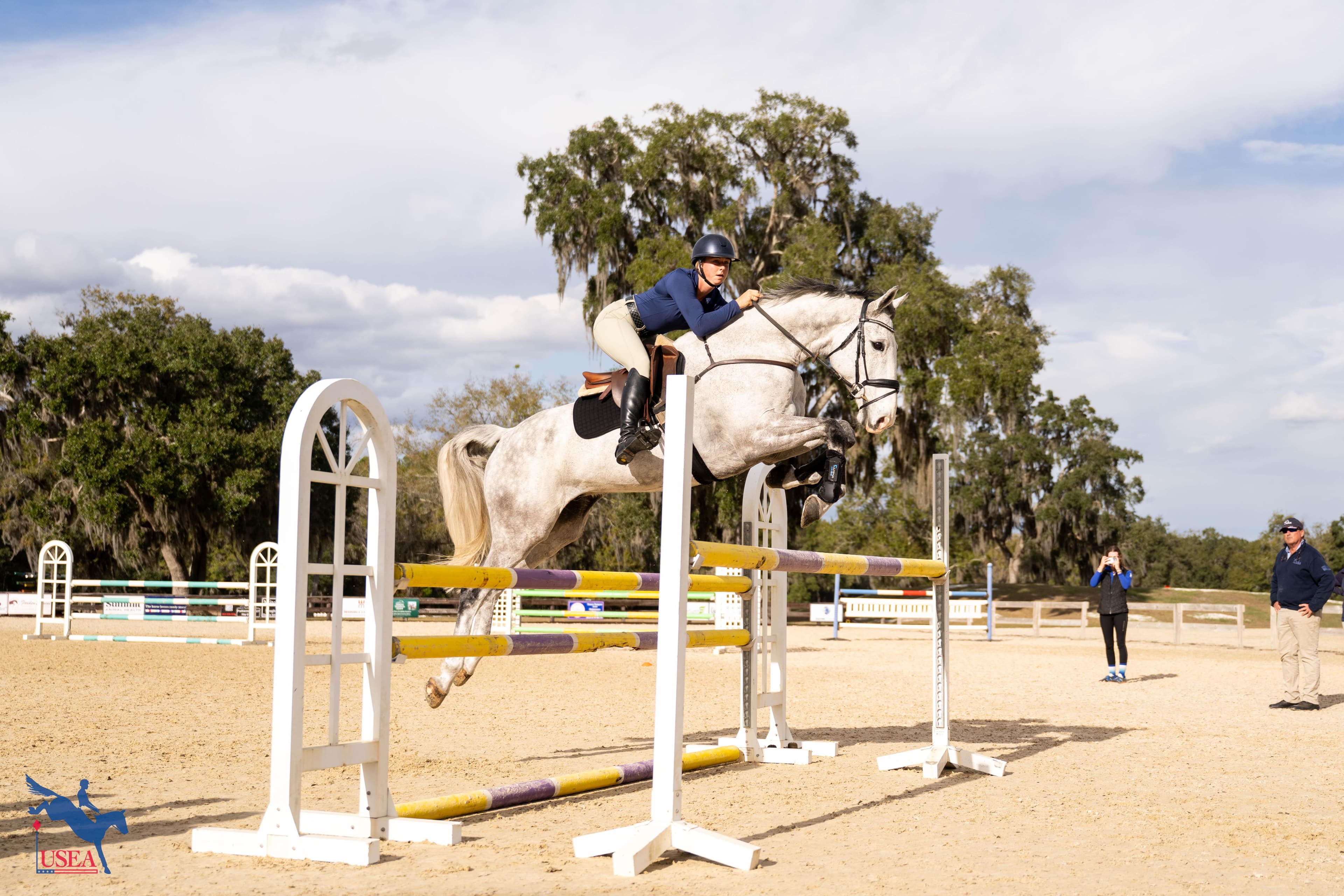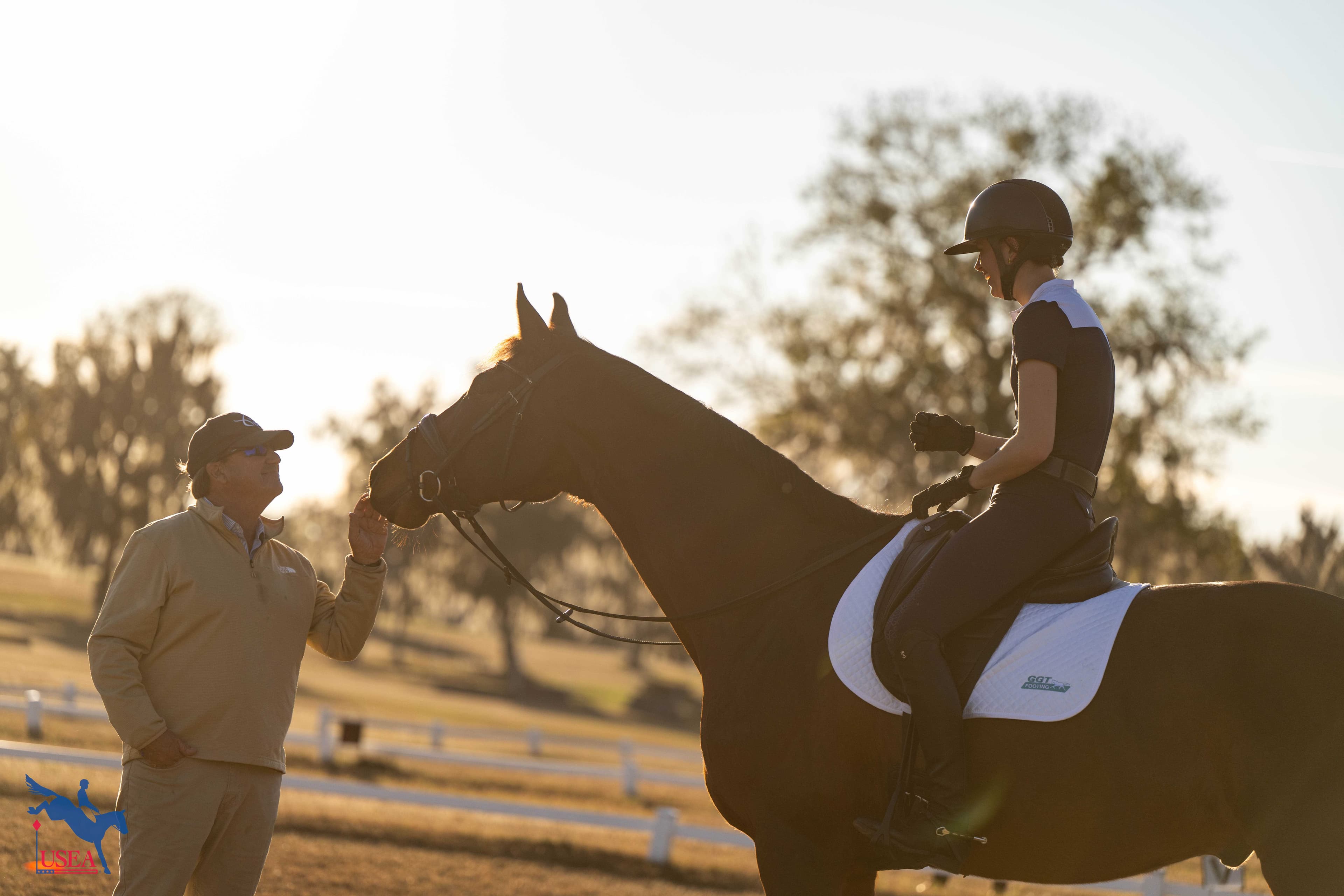Rule Refresher: FEI Rule Changes for 2019
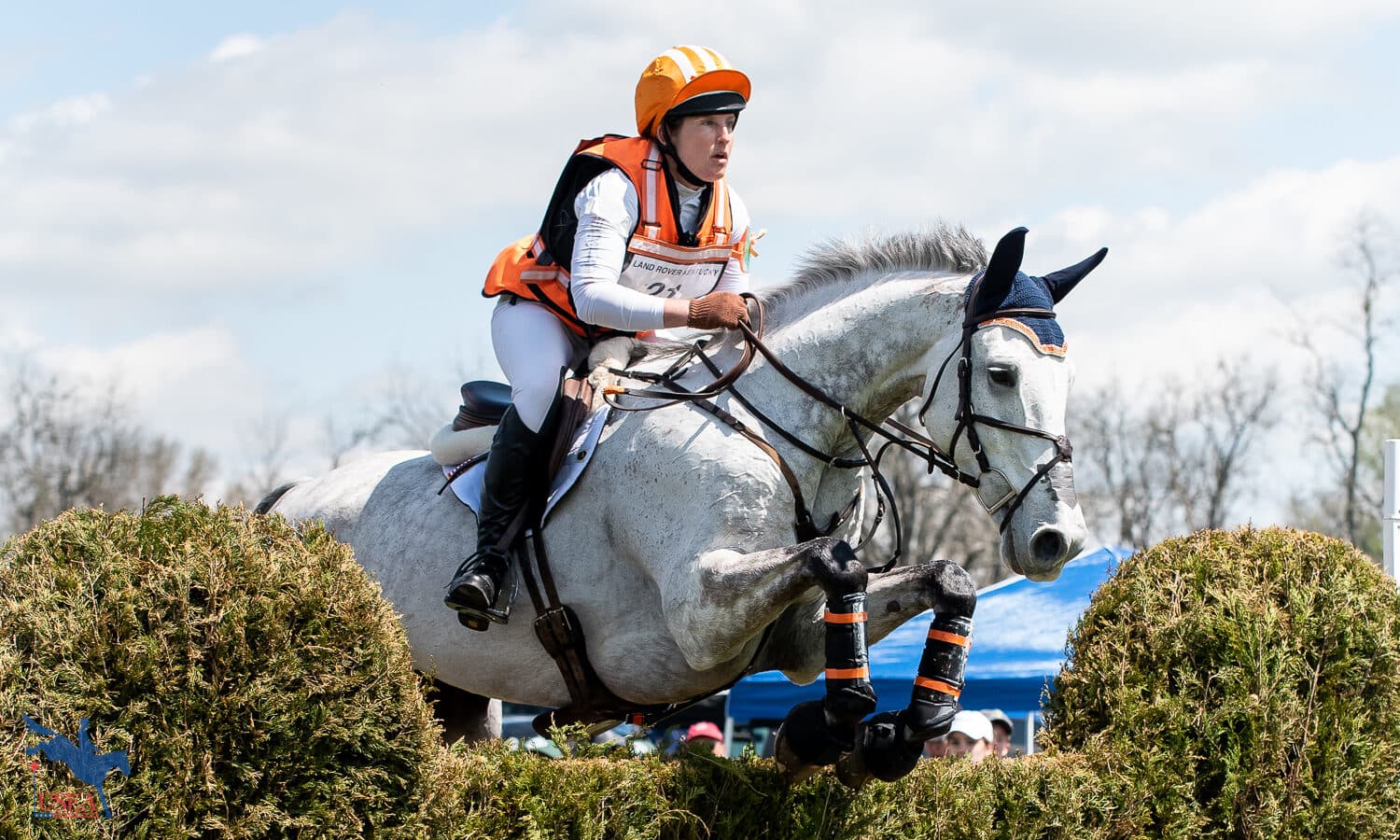
The 2019 FEI eventing season is set to kick off this weekend at the Fresno County Horse Park in Fresno, California with CCI2*-S and CCI3*-S divisions in addition to Introductory through Advanced horse trials. Make sure you start your FEI season off on the right foot by refreshing your memory of the changes to the FEI Eventing Rules for 2019 that were approved at the 2018 FEI General Assembly in November.
In addition to the rule changes for 2019, the verbiage throughout the FEI Eventing Rules has been updated to reflect the changes to the FEI Star System. See the chart below for a comparison of the FEI levels in 2018 to the new system in place moving forward.
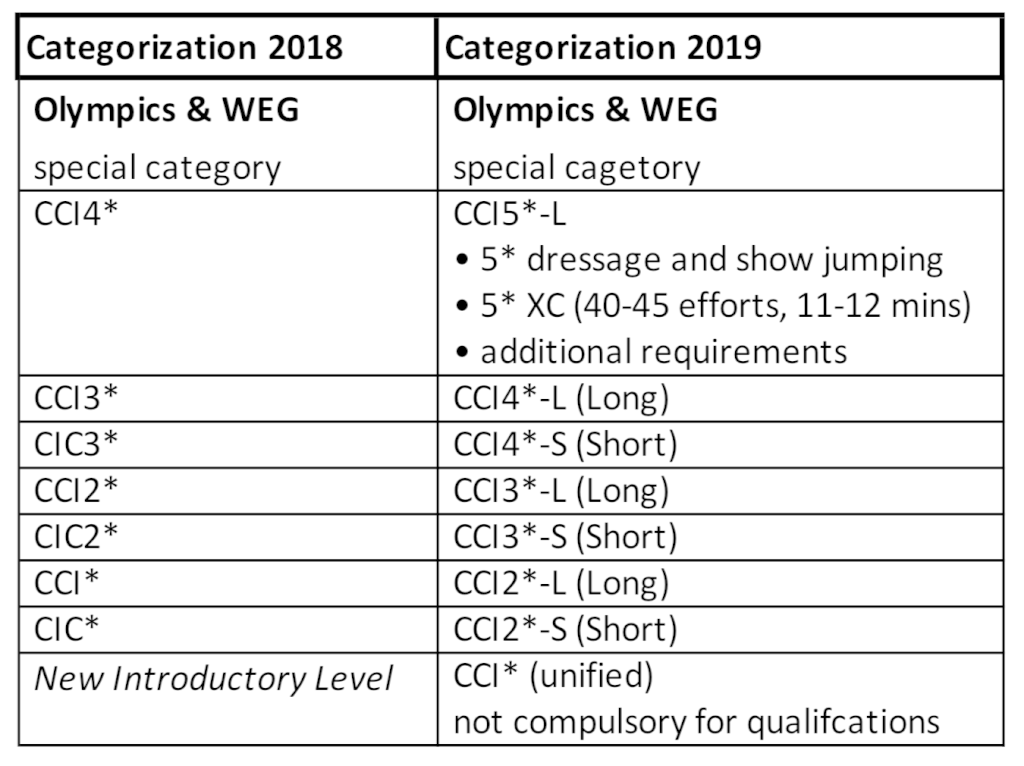
If you are competing at a national horse trials at the Beginner Novice through Advanced level, please refer to the USEF Rules for Eventing.
Text has been taken directly from the FEI Eventing Rules with emphasis added by the USEA. This is not a complete list of rule changes. To view all of the 2019 FEI rule changes, please refer to the FEI Eventing Rules.
Chapter 2 – Structure of Competitions
502 – Formats and Levels
502.1.2 – Long Format Competition (CCI-L)
A Long Format Competition may take place over three or more days.The Dressage Test will be spread over one or more consecutive days, depending on the number of competitors, directly followed on the next day by the Cross Country Test that will be directly followed on the next day by the Jumping Test. In the Long Format Competitions the Cross Country course will be of such a length that the Horse is required to be supremely fit and stamina will be required for success. The Cross Country Test will always take place before the Jumping Test.
502.1.3 – Short Format Competition (CCI-S)
A Short Format Competition may take place over one or more days.The Dressage Test will always take place first and will be followed on the same or following days by the Jumping and Cross Country Test. In the Short Format Competition the level of difficulty of the Cross Country course is similar to the Long Format according to the star system, but the course is shorter and the intensity of efforts will be higher. The Cross Country Test will preferably take place after the Jumping Test.
502.1.4 – Unified Format Competition (CC1*-Intro)
CCI1*-Intro may take place as a Short or Long formatas to the order of tests and Horse Inspection requirements.
Chapter 6 – Athlete and Horse Welfare
526 – Abuse of Horse
526.3 – Use of the Whip
Excessive and/or misuse of the whip maybe considered abuse of Horse and will be reviewed case by case by the Ground Jury according to but not limited tothe following principles:
a) The whip is not to be used to vent an Athlete temper.
b) The whip is not to be used after elimination.
c) The whip is not to be used after a Horse has jumped the last fence on a course.
d) The whip is not to be used overhand, (i.e. a whip in the right hand being used on the left flank).
e) The whip is not to be used on a Horse head.
f) The whip is not to be used more than three two times for any one incident.
g) Multiple excessive uses of a whip between fences.
h) If a Horse’s skin is broken or has visible marks the use of whip will always be deemed to be excessive.
526.4 – Blood on Horses
Blood on Horses must be reviewed case by case by the Ground Jury. Not all cases of blood will lead to elimination.
Dressage Test:If the Ground Jury suspects bleeding on the Horse during the test, he will stop the Horse to check. If the Horse shows fresh blood, it will be eliminated. The elimination is final. If the Judge through examination clarifies that the Horse has no fresh blood, the Horse may resume and finish its test (refer to article 430 of the FEI Dressage Rules).
Cross Country Test:For the Cross Country Test, all blood on the horse, if induced by athlete (spurs, bit, and whip), must be reviewed case by case by the Ground Jury. Non-minor cases of blood will result in Elimination. In minor cases of blood in the mouth, such as where a Horse appears to have bitten its tongue or lip, or minor fresh bleeding, after investigation in consultation with the Veterinarian, the Ground Jury may authorize the Athlete to continue.
Jumping Test:Horses with blood on the flank(s) and/or bleeding in the mouth will be eliminated. In minor cases of blood, such as where a Horse appears to have bitten its tongue or lip, Officials may authorize the rinsing or wiping of the mouth and allow the Athlete to continue; any further evidence of blood in the mouth will result in Elimination (refer article 241). For all minor cases (*) of blood induced by the Athlete in the mouth or related to spurs a Recorded Warning will be issued by the Ground Jury after providing the Athlete the opportunity to have a hearing. (*) The cases indicating Abuse of Horse will be dealt with according to the provision of Article 526.2 (Abuse of Horse – Warnings and Penalties).
527 – Yellow Warning Cards and Recorded Warning
The following actions will automatically result in the following sanction for the Athlete:
- All cases of minor Blood on Horse caused by the Athlete either in the mouth or on flanks from spurs shall be sanctioned by a Recorded Warning as a minimum or by stronger sanction(s)(as provided for under Art. 525.2).
- All cases of excessive use of whip, as defined above, shall automatically be sanctioned with a Yellow Warning Card or by stronger sanction(s)(as provided for under Art. 525.2).
- A Yellow Warning Card will be systematically awarded if the Athlete continues after clear 3 refusals, a fall, or any form of elimination.
- Should thesame Athlete receive more than one Recorded Warning for a case of Athlete induced Blood on a Horse within three years, he will automatically be issued a Yellow Warning Card.
- Two Recorded Warnings, within a 12 months period, for the same offence, will result in a Yellow Warning Card.
Chapter 7 – General Competition Rules
539 – Saddlery/Dress
539.2 – Dressage Test
539.2.2 – Permitted
a) A double bridle with cavesson noseband i.e. bridoon and curb with curb chain (made of metal or leather or a combination), (cover for curb “chain” can be made of leather, rubber, or sheep skin) is permitted, as authorized by the Dressage Rules in Annex A. Double bridle is not allowed for one and two star level CCI-L and S. Bridoon and curb must be made of metal and/or rigid plastic and may be covered with rubber/latex. The lever arm of the curb bit is limited to ten centimeters (10 cm) (length below the mouth piece). The upper cheek must not be longer than the lower cheek. If the curb has a sliding mouthpiece, the lever arm of the curb bit below the mouth piece should not measure more than ten centimeters (10 cm) when the mouth piece is at the uppermost position. Curb "chain" can be made of metal or leather or a combination. Cover for curb “chain” can be made of leather, rubber or sheep skin.The diameter of the mouthpiece of the bridoon and/or curb must be such so as not to hurt the Horse. Minimum diameter of mouthpiece to be twelve millimeters (12 mm) for curb bit and ten millimeters (10 mm) for bridoon bit.
b) A snaffle bridle of which the bit is made of metal, rubber or plastic material is also permitted as authorized in Annex A. Snaffles are permitted and must have a minimum diameter of fourteen millimeters (14 mm).For Ponies the minimum diameter shall be ten millimeters (10 mm). The diameter of the mouthpiece is measured adjacent to the rings or the cheeks of the mouthpiece. The reins must be attached to the bit.
c) The bridle must be made entirely of leather, except for a small disc of sheepskin, which may be used under the intersection of the two leather straps of a crossed noseband.
d) A breast plate may be used.
e) Ear hoods are permitted for all Events and may also provide noise reduction. However, ear hoods must allow for ears to move freelyand must not cover the Horse’s eyes and ear plugs are not permitted (with the exception of prize giving ceremonies).The ear hoods should be discreet in colour and design. Ear hoods may not be attached to the noseband.
For drawings of permitted bits and nosebands, see Annex A – Saddlery, table Bits, and table Nosebands. Certain tests may specify that only a snaffle bridle is allowed.
539.3 – Cross-Country and Jumping Tests
539.3.2 – Forbidden
Any form of blinkers, side, running or balancing reins; tongue straps and/or tying down the Horse’s tongue; any other restrictions, any bit or other item of saddlery likely to wound a Horse. Sheepskin (or other material) may not be used as addition on cheek pieces of the bridle.
For Cross Country, any device which does not allow an immediate and unrestricted smooth separation of the Athlete’s boot from the stirrup in case of a fall is forbidden.
Neck straps, if used on Cross Country, must be attached either to the breastplate or to the saddle.
For Cross Country, hackamores without bits are not allowedand the lower cheek (lever arm) may not exceed 10 cm on any bit.
Chapter 8 – Dressage Test
544 – Scoring
544.2.5 – Overall Impression of Athlete and Horse Mark
In all Eventing Dressage Tests, one overall mark will be awarded for the Overall Impression of Athlete and Horse with a double coefficient.
Chapter 9 – Cross-Country Test
548 – Scoring
548.1 Faults at Obstacles
Missing a flag as per article 549.2 – 15 penalties
Evidence: Only official video recording can to be used as evidence. Officials will clarify before start of Cross Country and inform Chefs d’Equipe/riders at meeting/briefing which video recording will represent the official view, to avoid any misunderstanding.
549 – Definition of Faults
549.2 – Run-Out/Missing a Flag
a) Run-Out: A Horse is considered to have run out (20 penalties)if, having been presented at an element or obstacle on the course, it avoids it in such a way that the body of the Horse (head, neck, shoulders, and pelvis – legs are not included) fail to pass between the extremities of the element or obstacle as originally flagged. Continuing on course without representing will incur elimination.
b) Missing a flag: A Horse is considered to have missed a flag (15 penalties)if the Horse jumps the dimension of the obstacle and the majority of the Horse’s body (as defined above) passes through the flags. This means that some part of the body is not inside the flags(e.g. one shoulder, or one shoulder and part of one hip).
c) The Horse will have successfully negotiated the fence, if the body of the Horse (as defined above) has passed the fence as originally flagged (i.e. the body but not all the legs are inside the flag is considered clear).
549.3 – Circle
549.3.2 – Obstacles Composed of Several Elements
At an obstacle composed of several elements (A, B, C, etc.) a Horse will be penalized once it has jumped the first element and before it has jumped the last element if:
a) It passes around the back of any element of the lettered combination that it subsequently jumps.
b) It crosses its tracks between the elements.
Chapter 10 – Jumping Test
553 – Scoring
553.2 – Time Faults
The length of the course and the speed demanded determine the time allowed. Completing the course in less than the time allowed is not rewarded, but exceeding the time allowed, athletes are penalized with 0.4 penalty per commenced second.Exceeding the time limit involves elimination.
Annex B – Cross-Country
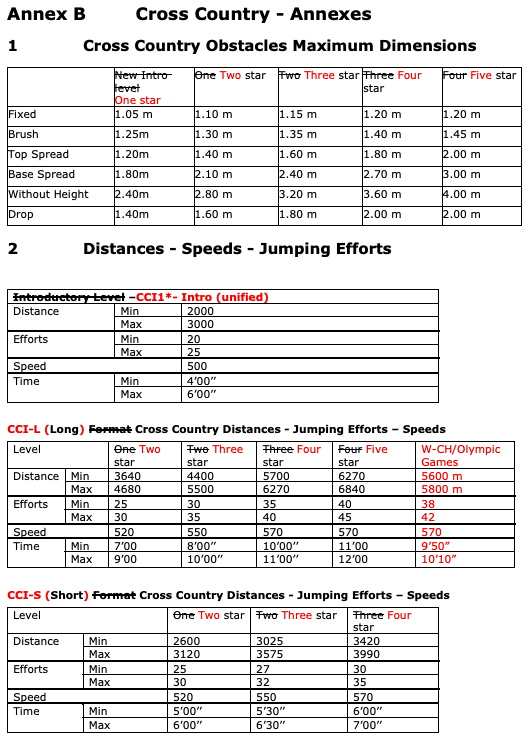
Want to catch up on past rule refreshers? Visit the links below:
- Rule Refresher: Are You Entered in the Correct Division?
- Rule Refresher: Entering Events
- Rule Refresher: Exercise and Warm-Up
- Rule Refresher: Accidents and Injuries
- Rule Refresher: Dress, Equipment Edition
- Rule Refresher: Dress, Attire Edition
- Rule Refresher: Saddlery
- Rule Refresher: Disqualification
- Rule Refresher: Am I Qualified? (Appendix 3)
- Rule Refresher: Inquiries, Protests, and Appeals
- Rule Refresher: Mandatory Frangible Devices
- Rule Refresher: Permitted Equine Therapists
- Rule Refresher: Changes Effective December 1, 2018
- USEF Updates Rulebook with Extraordinary Rule Changes
- Rule Refresher: Qualifications for Horse Trials

